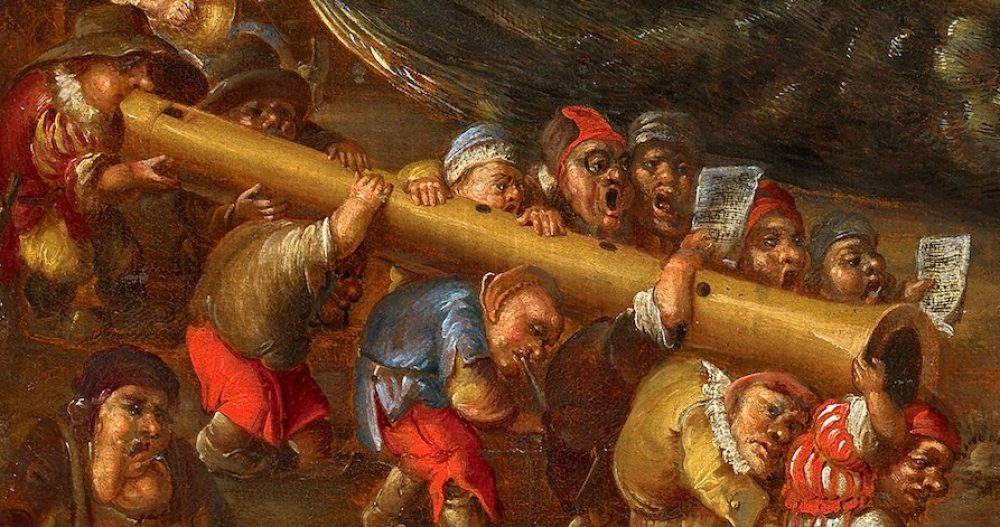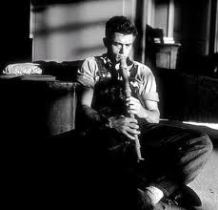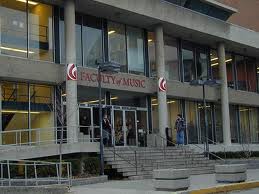When I was eight I lived in the area of southwest London known as Barnes, and I went to Westfields County Primary School. Westfields was one of those old rectangular buildings with a central assembly hall/gym surrounded by classrooms along the walls, offices at the front end and the student cloakroom at the rear. The loo stalls were outside, so answering the call of nature between late October and April – most of the school year – usually necessitated a chilly trip. (That’s all been knocked down and replaced now, but the old back gate is still there.)

In the autumn of that year my classroom teacher Mr. Green announced that he would be teaching group recorder lessons to anyone who wanted to learn, every Tuesday after school. He gave us a letter outlining the registration routine, lesson schedule, and the cost. Anyone wanting their child to participate was asked to sign the form and send it back, along with four shillings and ten pence or whatever it was – 2s.6p. for the recorder and the remainder for the book.
When I went back to school the next day with the signed form and money in hand, I was happy about it but I thought I was doing it at my mum’s insistence rather than mine. Years later I heard her version of the story, which was that I’d announced the offer of lessons, asked ‘What’s a recorder?’ and that when I understood it was the flute thing my Uncle Bill played, I got very excited and wanted to be signed up right away.
I don’t recall the part about Uncle Bill at all, but it doesn’t surprise me that he might have been an inspiration to me. Married to my mother’s first sister, he was one of those men whom everyone liked – cheerful, good-natured, sociable, intelligent, funny. It was one of life’s cruelties that he died of a brain tumour in his late thirties, leaving my Aunt with two small children and her heart bashed in.
Uncle Bill played the recorder at the family singalongs around my Aunt’s piano. My Aunt played piano extremely well, inventing accompaniments to show tunes, folk songs and the occasional hymn. Everyone loved to sing and did so enthusiastically, but I didn’t because I’d been asked not to. Allegedly I took after my father’s ‘tin-eared’ side of the family because I couldn’t carry a tune. [My father came from a family full of atheletes, and just to be clear, I don’t take after them either.] It was no fun not joining in at the family piano-swarmings, so the possibility of playing what Uncle Bill did must have seemed like a great idea to me. Off I went to recorder class.
I liked playing a lot, and I didn’t have to be reminded to practise. My playlist of favourite tunes included Down in Demerara, March from Judas Maccabeus and All Things Bright and Beautiful, and like most kids I made up my own tunes as well. I still have a couple of those first attempts at ‘composing’ and they’re pretty hilarious, but I’ve often wondered why that particular creative desire went underground for so many years afterward. Years later, while teaching basic recorder for music education students at university, I regularly asked them to think back to their earliest musical experiences and asked, did they made up their own songs or tunes? Do they, still? (Most answered no.) When did they stop doing that, and why?
Very interesting, the looks on their faces as they wondered about all that.
Anyway, after a few weeks passed, my mother must have been surprised to get another letter from Mr. Green, asking that I be allowed to join the class which had been already playing for a year. He thought I’d catch up to them quickly and was worried I’d get bored if I stayed with the other beginners. So I switched group and, apart from having to deal with a few snotty comments from the second-years, it was just fine. That Christmas I joined in with my recorder at the family singalong, and it was just the best!

My friend Pauline remembers that Mr. Green drove around in a Mini, often with a cello in the back seat. Sadly I don’t recall that, but I’m very glad that Mr. Green was such a music enthusiast, and so generous of spirit. He taught those classes without charging anything for his time. What a gift, and I’ll always remember him for it.
Side note for anyone who’s been designated as ‘tin-eared’:
Being truly ‘tone deaf’ is pretty rare, and most people who think they can’t carry a tune can learn to sing. We’re usually quite unaware of our voices, and when singing it’s hard to hear your own sound as it rattles around in your head. For some there’s also an experience of fear or embarrassment connected to our early attempts to sing in the company of others, and the memory of it can stick like grime. For me, some voice lessons in Basel and the generous encouragement from colleagues were a big help in banishing some gremlins of old.
I’m not about to sing any solos in public, anywhere, but I’ve managed to sing in small groupings at a few concerts and once I even sang two solo lines in a program of music from medieval convents, which on top of everything else was recorded for the radio. I was so nervous I almost passed out, but hearing myself when the show was broadcast a few weeks later was an amazing little moment. I was no Hildegard of Bingen, but I didn’t suck. Who knew?













